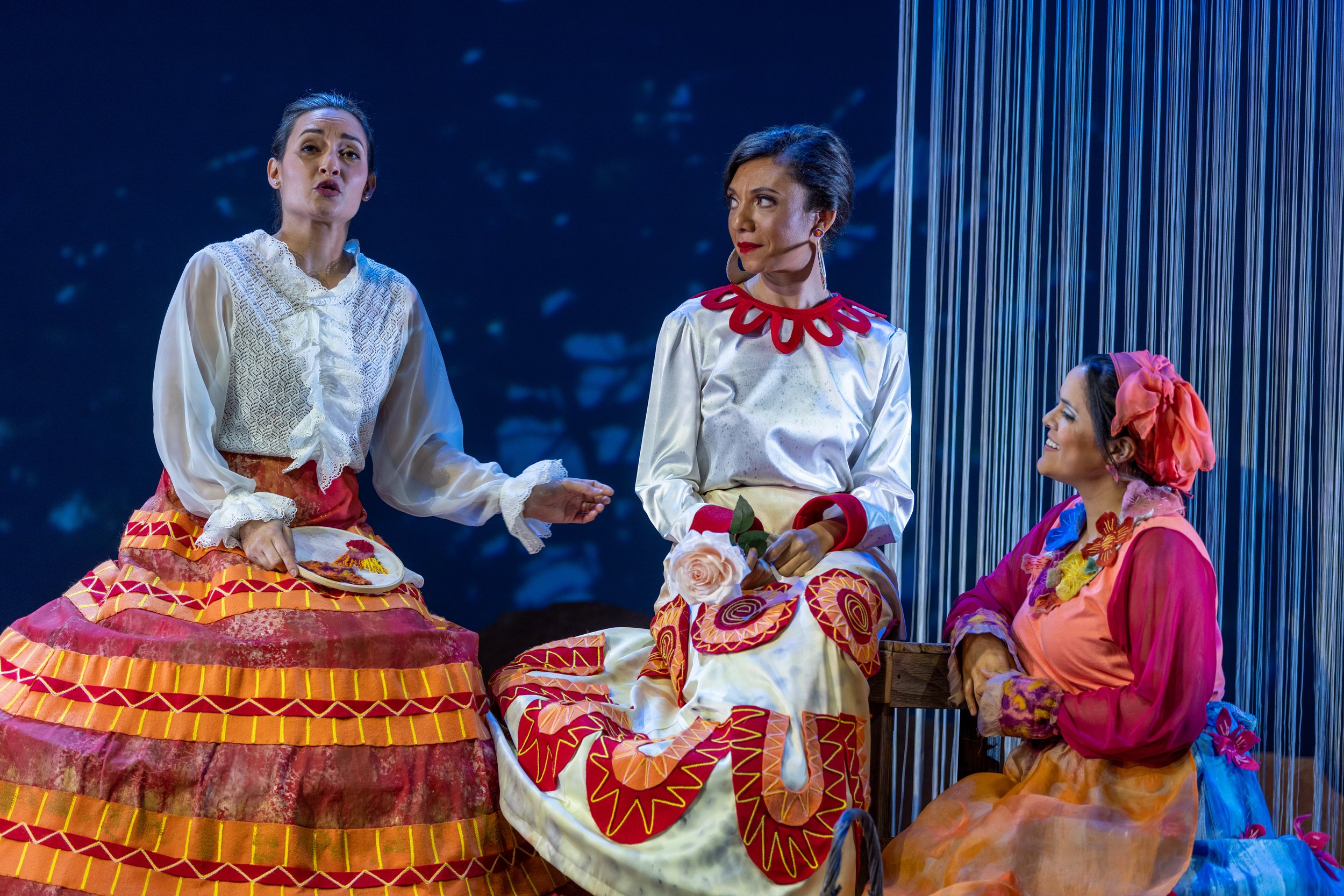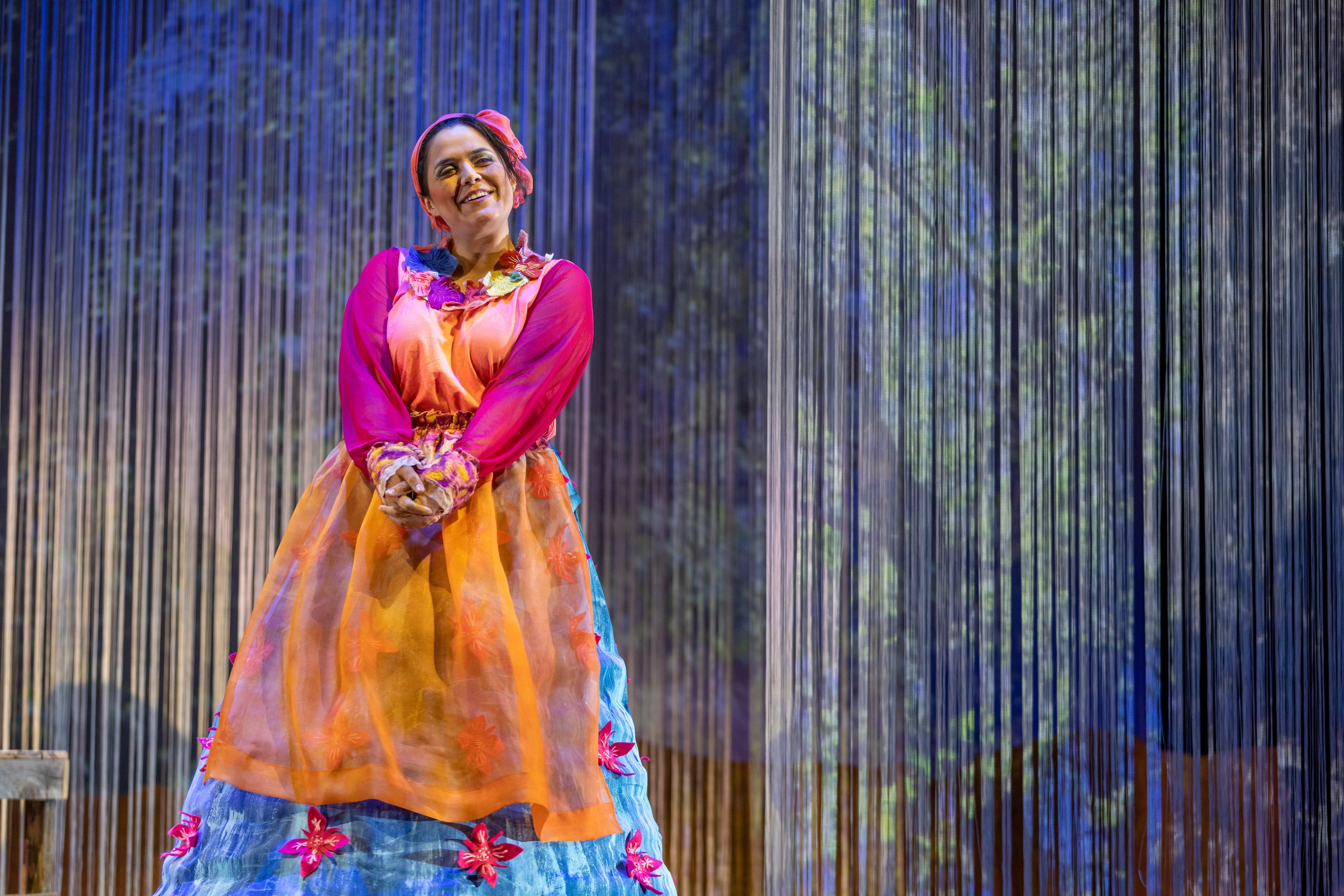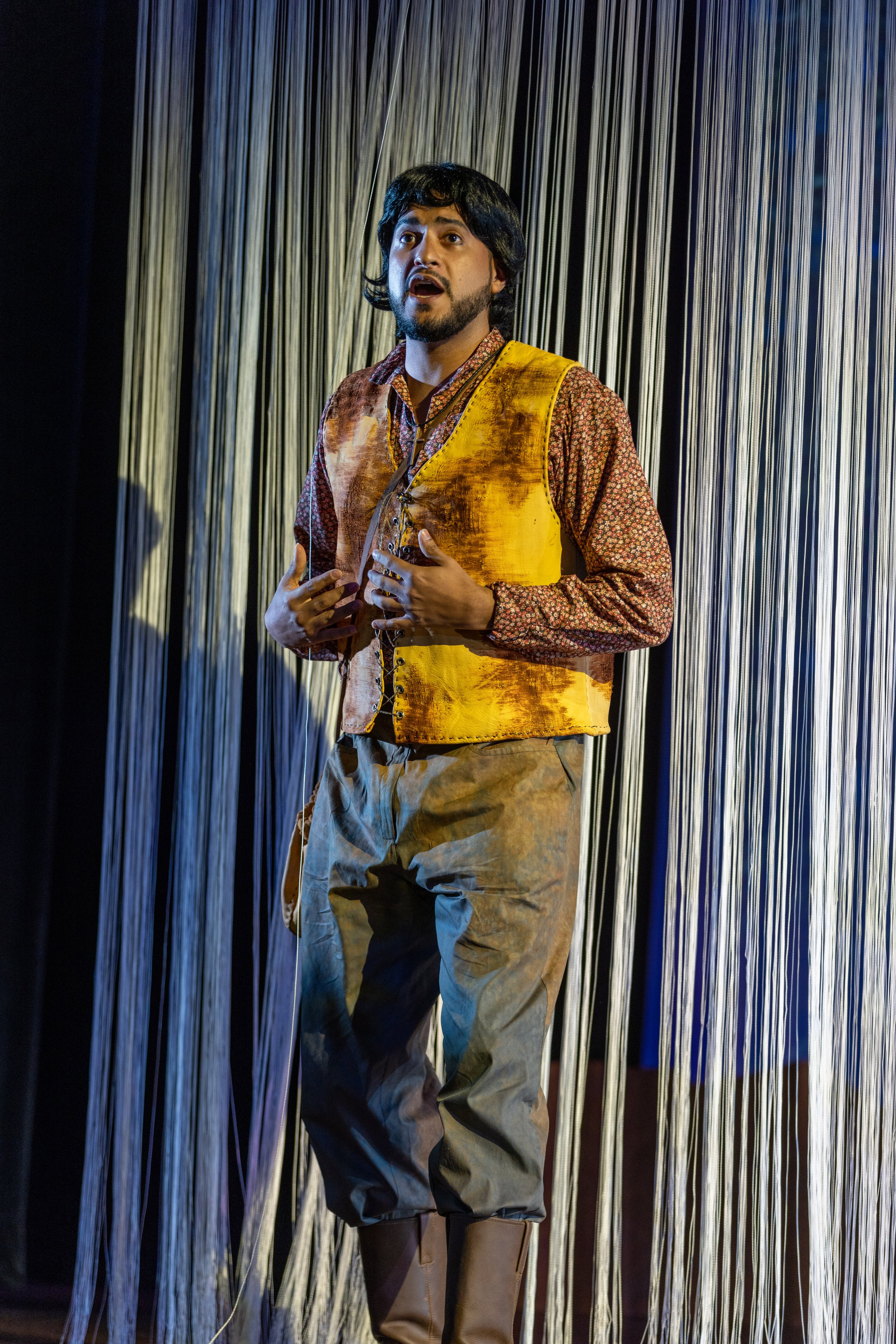Opera Lafayette’s offerings for the second half of the 2021-2022 season are organized around a single theme - The Era of Marie Antoinette, Rediscovered – in three productions presented over the first two weeks of June. Her Majesty Antoinette, the last Queen of France, was herself a musician and a proponent of the musical arts. One of her favorite works was the opéra comique Silvain (1770) by composer André-Ernest-Modeste Grétry and librettist Jean-François Marmontel, a work popular in Europe during its time. Her affection for the opera is surprising for a work whose major theme is expressed near the end of the libretto as “simple virtue holds more weight than good birth”. However, she was a strong advocate for pastoralism, a rising tide of sentiment in pre-revolutionary France; she even had a model farm constructed. The opera’s simple story of estrangement and reconciliation between family members and classes, coupled with Grétry’s lovely, melodious music and impassioned arias and ensemble numbers are quite enough for an evening’s entertainment. However, there is more to this story, and Opera Lafayette employed an impressive team of experts to communicate that more, offering several programs to educate its audience about societal changes in 18th century France that inspired creation of the opera and how its message played out for good and ill on both sides of the Atlantic.
Camille Ortiz as Elena and Victor Sicard in Silvain. Photo by Jen Packard; courtesy of Opera Lafayette.
To emphasize the story’s relevance for today in the Americas, Opera Lafayette’s Artistic Director and Conductor Ryan Brown has moved the story from rural France to the American Southwest, specifically the area of southern Colorado and northern New Mexico, where issues regarding landownership and control have engendered conflicts in the area lasting hundreds of years. This is the second opéra comique that Artistic Director Brown has recast in the 19th century Southwest; see my report on Le Maréchal Ferrant produced in 2020 and presented in DC during September 2021. Mr. Brown chose young filmmaker Tania Hernández Velasco to work with him on this project, commissioning her to record visuals from Taos, NM and San Luis Valley, CO for the staging. She also utilized visuals from her film “Titixe”, about efforts to convince her grandmother to keep the plot of land her peasant grandfather had toiled. The libretto was reworked to fit the new setting by Linn Carey Mehta with singing in French and spoken dialog mainly English with intermittent French and Spanish. The plot for OL’s Silvain involves a son Silvain, disowned by his father Dolmon, for marrying a poor Spanish-speaking woman, Elena; father and son are French immigrants who managed to acquire a large tract of land in the San Luis Valley of Colorado in the 19th century. Silvain and Elena farm for an adequate living, supplemented by hunting on common lands under a considerate landowner. They have two daughters, Paulina and Lucia, and their community is making plans for Paulina to wed Bazil, when news arrives that a new owner of the land is coming to the area, threatening new restrictions. The new owner is none other than Dolmon, heightening the father-son conflict for Silvain. The younger son of Dolman arrives on the scene first and orders three guards to arrest Silvain for hunting on Dolmon’s property. Dolmon then arrives and is charmed by the goodness of Elena and her two daughters, whom he had not met before. The father reconciles with his son Silvain and accepts the wife and daughters as his family. While the story still resonates today, it was revolutionary in 18th century France.
l to r: Camille Ortiz as Elena, Samantha Louis-Jean as Paulina, and Teresa Castillo as Lucia. Photo by Jen Packard; courtesy of Opera Lafayette.
In an excellent pre-opera talk, Conductor Brown along with Sylvia Rodríguez, professor emeritus of anthropology at University of New Mexico, and Callum John Blackmore, doctoral student in historical musicology at Columbia University, provided the background for Grétry’s opera and OL’s version of it. We learned that pastoralism, the idealism of simple country life and its connection to nature, was sweeping France in the 18th century as a migration to cities and the problems that was causing were pressing issues. The simple life was not so simple as land use issues between nobility and peasant farmers remained a constant struggle. The Grétry-Marmontel theme placing simple virtue over birth rights resonated with many and would lead to the French Revolution of 1789. The issues of class distinction and struggles over land use rights had migrated to the U.S. Southwest as the area changed ownership from native peoples, Mexico, and the U.S., with Mexico having given huge land grants to European immigrants there. The situation in the Southwest was complicated by a critical scarcity of water, which was also an issue causing conflicts between land users and owners, especially in the common lands which everyone could use. The opera Silvain also immigrated to the U.S. and had a substantial run in New Orleans in 1796. 18th Century French music, including Silvain was being performed in its era in the West Indian French colony of Saint-Domingue, which will be the subject of another OL performance this June. Silvain was performed there, and the message was used, in Mr. Blackmore’s words, to paper over the brutality of the slave economy. Pretty music yes, and more!
Teresa Castillo as Lucia and Jehú Otero as Bazil. Photos by Jen Packard; courtesy of Opera Lafayette.
I tried to take all of this information in, including listening to one of the educational series offered by OL in preparation for the opera. However, it was when Conductor Brown first moved the baton starting OL’s 22-piece orchestra playing that I first felt the familiar; yes, I felt Opera Lafayette viscerally when 18th century French music began to play on period instruments and filled the auditorium with beautiful sound. This is OL’s core strength, and for me, this was the sustaining life blood of the performance. Grétry’s score complemented the drama onstage with music that was continuously providing pleasing melodies, marvelously played by the orchestra.
Baritone Victor Sicard sang well and created a believable Silvain as a loving husband struggling with his relationship with his father. His duets with wife Elena played by soprano Camille Ortiz were especially enjoyable. Ms. Ortiz was a highlight of the performance from her first appearance. Her solo aria worrying that the reappearance of the father would strain her relationship with Silvain was especially touching. The daughters were well played by soprano Samantha Louis-Jean as Paulina and soprano Teresa Castillo as Lucia. Ms. Castillo showed some sparkle and humor as the not yet marriage age daughter envying her sister. Another highlight of the performance for me was tenor Jehú Otero as Bazil. His singing and acting were especially endearing. Bass-baritone Nathan Berg was on point as the father Dolmon. The conversion of angry father to charmed father-in-law happens fast in this drama, and he made the most of it. Dolman the young son was ably played by Zack Powell as were the three guards played by Juan Hernandez, Gilbert Chavez, and Jose M. Pietri-Coimbre. The ensemble numbers ranging from two to seven performers were a special treat. At first, I found myself being critical of the acting in the spoken dialog and faulted the players, even I as I loved the singing. However, I now suspect the problem was the libretto which made natural speech difficult; the dialog sometimes sounded more like it was being read than spoken, especially in the first half of the opera before the tension among the characters rose and was reflected in the speech.
Silvain (Victor Sicard) is confronted by the younger son of Dolmon (Zack Powell) accompanied by three guards (Juan Hernandez, Gilbert Chavez, and Jose M. Pietri-Coimbre) while Bazil, the mother and daughters look on. Photo by Jen Packard; courtesy of Opera Lafayette.
The staging of the opera was well done. Cascades of string served as walls and panels separating or framing the stage action. The costumes were spectacular, colorful, eye-pleasing, and fitting for the setting of the drama, although I kept thinking that these peasant ladies should recommend to their seamstress that she move to New York where a brilliant career as a fashion designer awaited her. The costumes for the performance were in fact designed by artist Patricia Michaels, already established in the fashion design world. Another interesting facet of the staging were the visuals projected onto a screen at the back of the set, that from the beginning introduced us to the agrarian basis of the drama and were used to enhance storytelling throughout. The visuals selected by Stage Director Tania Hernández Velasco were a welcome addition and a highlight of the performance, though on a few occasions the movement in the visuals competed too successfully with the action on the stage, rather than supporting it.
All is well that ends well: in the group to the right, the father Dolmon (Nathan Berg) talks amiably with two of the guards to his left while everyone feels and expresses good will. Photo by Jen Packard; courtesy of Opera Lafayette.
For years now, I have struggled to define Opera Lafayette’s special appeal that made me a fan immediately several years ago. I always felt there was something in addition to the reliable creativity, authenticity, and high quality that OL always brings to the table. At last, I think I have it. On the way home from Silvain, my wife was gushing about the performance. My wife rarely gushes and never about opera. Her typical comment without my probing is “It was good; I enjoyed it”. This time she even posted comments on Facebook when she got home, a first about opera: “I realized something tonight that I had not realized before. I love Opera Lafayette. Loved tonight’s performance of Silvain, always with period instrumentation. Thank you Ryan Brown (founder, conductor, and artistic director)! This is food for my soul, with a healthy dose of entertainment and education.” Food for the soul? That’s it; the descriptor I have searched for is “wholesome”. Merriam-Webster defines wholesome as “promoting health or well-being of mind or spirit”. Wholesome has gotten a bad rap as boring, but that depends on the richness of the experience, not a problem for Opera Lafayette. Ryan Brown is keenly attuned to wholesome, and his productions reflect that quality, while at the same time being entertaining and fun. Attending Opera Lafayette productions engage and bring out that better person in us, providing an enriching, humanizing experience. That is not an overstatement; my wife responds strongly to wholesome.
The Fan Experience: Silvain was scheduled for performances on June 2 and 3 in the Terrace Theater of the Kennedy Center and on June 7 in El Museo del Barrio in New York City. The performance last approximately 90 minutes without an intermission. Supertitles in English were provided. Also remaining on the docket for Opera Lafayette this season are Concert Spirituel Aux Carïbes on June 9 in El Museo del Barrio and on June 12 in the Kennedy Center’s Terrace Theater. OL will also perform a concert The Musical Salon of Marie Antoinette on June 8 in El Museo del Barrio.
The program handed out at performances for this season is over a hundred pages, a collector’s item, covering the details and histories of the works to be presented.
Opera Lafayette’s next two seasons, revealed in the performance program, will also be theme-based surrounding the eras of two more famous French women, The Era of Madame de Pompadour for 2022-2023, and The Era of Madame de Maintenon in 2023-2024.






